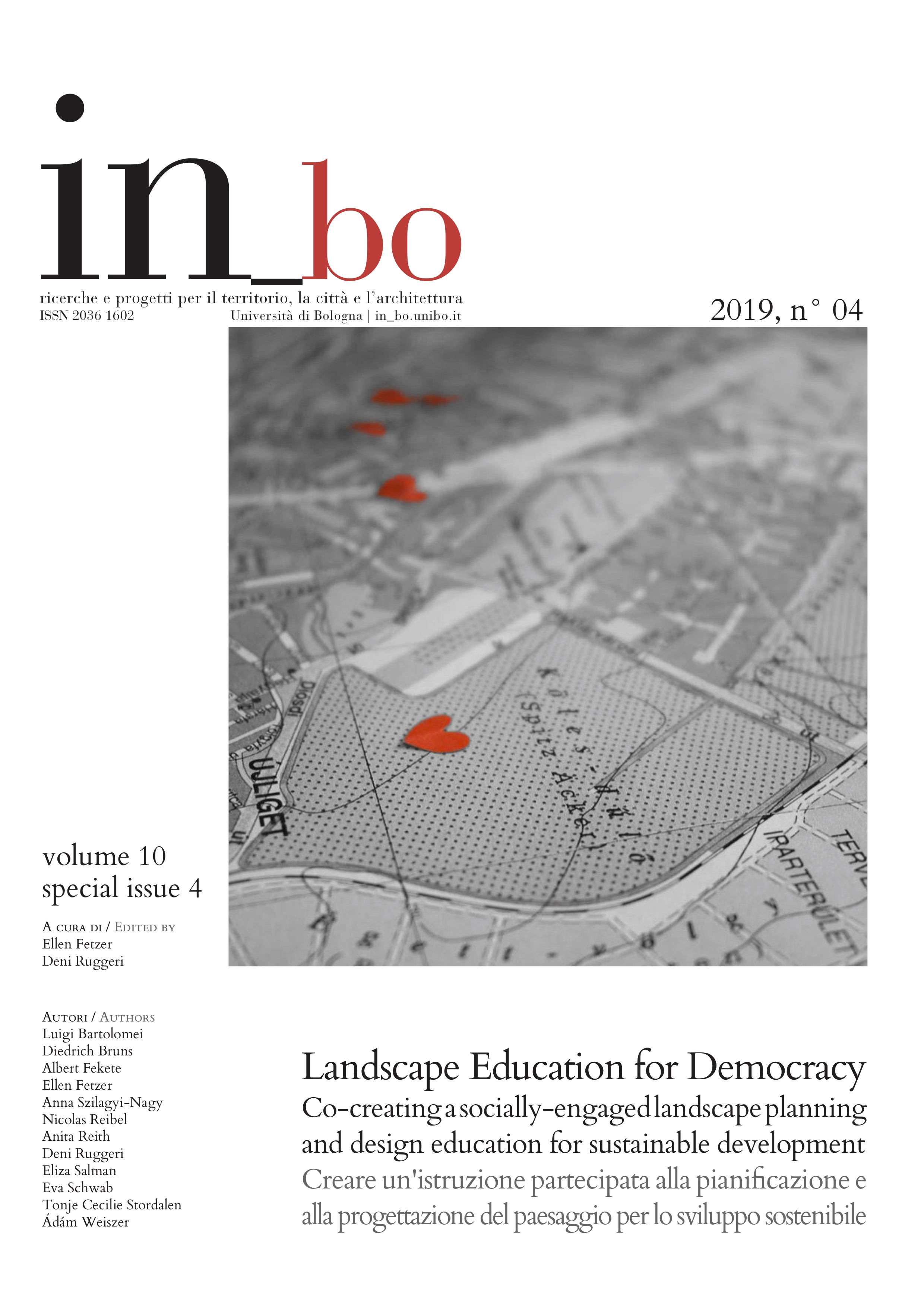The Future of the Landscape Education for Democracy Programme
DOI:
https://doi.org/10.6092/issn.2036-1602/9848Keywords:
youth engagement, game-based participation, built environment education, community-based design, constructive dialogueAbstract
This chapter reflects how the LED project has achieved systemic change, institutional learning and sustainability. The introduction of the LED course into the educational systems of five universities in four European countries has been challenging because it required capacity building at various levels: building a joint body of knowledge; testing, evaluating and revising teaching and learning methods; learning ICT skills; adapting to virtual team work; becoming a reflective educator - to name only the most relevant ones. In parallel, this new capacity had to be validated, ideally by full curricular integration of the new course, which required systemic change. The LED team therefore had to be in constant dialogue with its institutional environments and work hard to disseminate its outcomes from the beginning of the project. This process was very similar to the aims of the LED course itself: it enabled a community to work together, to create something which they cannot create alone and to consider this outcome as an added value that needs to be maintained. The sustainability concept of the LED programme therefore builds on three mutually reinforcing pillars: the LED course, the LED resources and the LED certificate. Each is explained in more detail in this chapter. We conclude with an emerging participatory and transdisciplinary methodology for landscape democracy, the landscape biography.Downloads
Published
2019-09-16
How to Cite
Fetzer, E., Bruns, D., & Szilágyi-Nagy, A. (2019). The Future of the Landscape Education for Democracy Programme. IN_BO. Ricerche E Progetti Per Il Territorio, La Città E l’architettura, 10(4), 52–57. https://doi.org/10.6092/issn.2036-1602/9848
Issue
Section
Invited Speakers
License
Copyright (c) 2019 Ellen Fetzer, Diedrich Bruns, Anna Szilágyi-Nagy
Copyrights and publishing rights of all the texts on this journal belong to the respective authors without restrictions.
This journal is licensed under a Creative Commons Attribution-NonCommercial 4.0 International License (full legal code).
See also our Open Access Policy.
Metadata
All the metadata of the published material is released in the public domain and may be used by anyone free of charge. This includes references.
Metadata — including references — may be re-used in any medium without prior permission for both not-for-profit and for-profit purposes. We kindly ask users to provide a link to the original metadata record.







